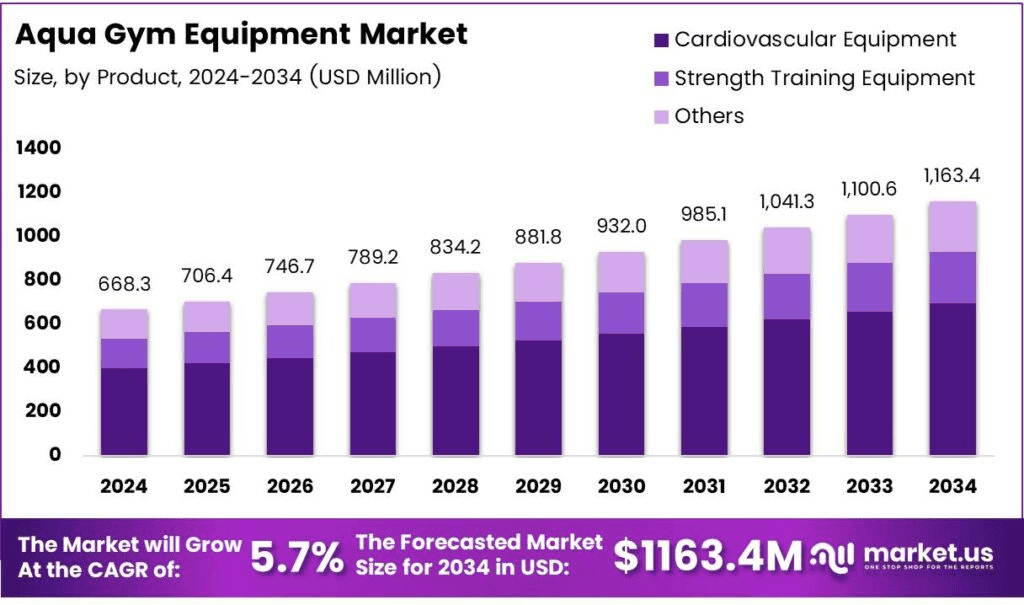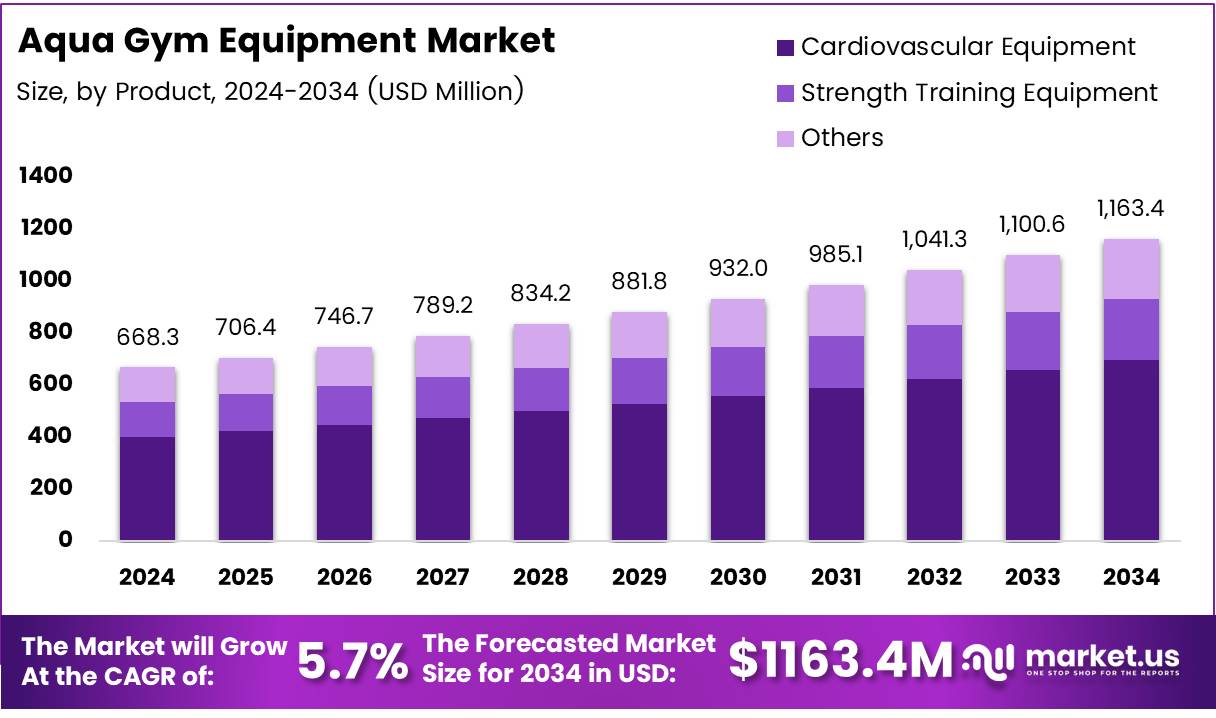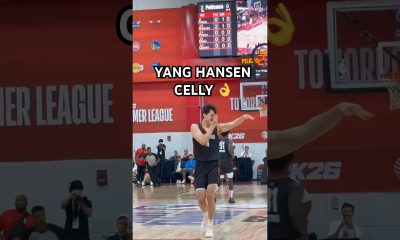It can cost a fan up to $5,000 a year to follow major sports, between merchandise and game tickets and TV streaming access. Is the pursuit of profit harming sports fans?
Guest
Joon Lee, Independent sports journalist covering sports and culture. His work has appeared on ESPN, Bleacher Report and The Washington Post.
Transcript
Part I
MEGHNA CHAKRABARTI: In 1979, future Baseball Hall of Famer Nolan Ryan signed a four-year, $4.5 million contract with the Houston Astros. That contract made Ryan the first athlete in U.S. sports history to earn a million dollars in a single season. Decades later, the New York Mets’ Juan Soto is making more than $61 million this MLB season, and it’s just one of his 15 year, $765 million deal he signed in February.
So look, there’s no question there is a lot of money in sports today. Top athletes get paid more than ever. And in the U.S., the “Big Four” — aka Major League Baseball, the NHL, the NFL, and the NBA — are making more money than ever, raking in billions dollars in revenue every year.
It’s also costing more money than ever simply to be a fan who wants to watch sports.
(MONTAGE)
FAN 1: I’m calling all sports fans with this one because we all have a major issue that’s been affecting all of us, and all of us absolutely despise it: blackouts and the need to have 15 different streaming services to go ahead and watch your favorite sport.
FAN 2: I remember cable used to be so simple. One payment a month. Get your games, get to watch your local team. Now it’s like — my local team plays on YouTube TV. I gotta pay for it. Then the next week they play on Amazon Prime on Prime Time, and I gotta pay for that.
FAN 3: You gotta have Netflix. You gotta have Apple TV. You gotta have YES. You gotta have SNY. You gotta have ESPN. You gotta have TBS. You gotta, like (LAUGHTER.) Yo, I’m being honest. You gotta have MLB Network. Yo, that’s like nine different things I just mentioned, bro.
FAN 4: Fubo, the streaming TV service that is very popular amongst live sports fans is raising its prices by $5 a month. Why do streaming services keep raising their prices all the time?
REPORTER: If you wanna binge all of the football? Well, you’re now gonna be blowing through your entire budget.
CHAKRABARTI: In May, the United States Senate Committee on Commerce, Science and Transportation held a hearing on the changing ways that Americans are consuming live sports. And here’s committee chair, Texas Republican Senator Ted Cruz.
SEN. TED CRUZ: Sports might be the most powerful cultural unifier that we have. Whether on the couch or in the stands, Americans come together to cheer, to hope, to believe. But those millions of fans are asking a simple question: Why does it seem to be getting harder and more expensive to just watch the game?
CHAKRABARTI: Well, joining us now is Joon Lee. He’s an independent sports journalist whose work has appeared on ESPN, Bleacher Report and The Washington Post. And he recently wrote a New York Times guest essay titled $4,785. That’s How Much It Costs To Be a Sports Fan Now. Joon is also the founder of Morning Announcements, a production company behind his YouTube channel on sports and culture.
Joon Lee, welcome to On Point.
JOON LEE: Thanks for having me on. I appreciate it.
CHAKRABARTI: So Joon, a minute ago, after we heard that first little group of sports fans decrying how much and how hard it is to watch sports, I paused at the end of that. You know why? Because my mind was stuck on — it’s Monday today — my mind was stuck on Monday Night Football. Like, back in the day you just turned the television on and you could just like, watch Monday Night Football.
If I wanted to do that now, how would I do that? Where would I go?
LEE: Well, for Monday Night Football, you turn on ESPN. Sometimes it’s on ABC. But then it’s kind of the rest of the week that’s taking a hit, where on Thursday for the NFL, you have Amazon Prime. This year there’s gonna be a game on YouTube, which is for free, but it’s just another streaming service that people have to keep track of. And then on Sundays, you know, there’s CBS, Fox, NBC, there’s just a whole lot of places where you need to go to watch sports now.
And even for someone like me who watches sports on a nightly basis, whose life and job revolves around it, sometimes feels like I need a spreadsheet to keep track of where games actually are these days.
CHAKRABARTI: (LAUGHS) I’m sure there’s an app for that these days. Or maybe like nine apps! Who knows? We’ll talk about that.
LEE: (LAUGHS)
CHAKRABARTI: But Joon, so before we get into this really kind of just crazy world now that sports fans have to navigate, as you said, I wanna just actually start with with you. Before you became a sports journalist and a sports writer, what role did sports play in your life?
LEE: Sports was very central to me becoming an American. I moved to the United States when I was two months old. I grew up in Brookline, Massachusetts, right outside of Boston.
And I grew up during the time where I kind of became a part of one of the most entitled generations of sports fans ever — where the Red Sox, the Celtics, the Patriots, the Bruins, they all won championships in my lifetime. It’s something that, you know, I take a lot of pride in as a Bostonian who now lives in New York, but I’ve come to learn is just obviously very uncommon for people to grow up in that way. (LAUGHS)
And I think for me, sports was the way in which I understood how America worked. Because I learned through listening to local sports radio stations — WEI and the Sports Hub 98.5 in Boston — and reading newspapers — the Globe, the Herald — you could learn so much about where America is at in any given moment culturally from the conversations that are happening in sports. Whether they’re about labor or race or gender, I think sports is often the best place to see kind of the cultural tension points of any given moment in the country.
“Whether they’re about labor or race or gender, I think sports is often the best place to see kind of the cultural tension points of any given moment in the country.”
Because you often, you know, people are often approaching sports with this mindset of like, this is where I go to enjoy myself. And it’s not politics where people are almost constantly posturing about what they believe in or what their values are. And sports, I think, is the pure representation of how someone actually feels. People really tend to show what they actually believe through the angles and the conversations that they’re having in sports. And so I think that sports is this very interesting reflection beyond the wins and losses of the psyche of America at any given moment.
And I think beyond just wanting to watch the Red Sox win the World Series on in any given year, you know, it was a place for me to kind of understand how the cultural experiment of America was working at any given moment.
CHAKRABARTI: Joon, okay. I deeply appreciate and completely agree with your analysis that sports tells us a lot about what people actually believe, but being based in Boston, myself, Joon, I mean like, okay, growing up, I’m not sure that like being a Boston Sports fan was dialing you into what Americans in general believed, but more what Bostonians believed! (LAUGHS)
LEE: (LAUGHS) Sure! I mean, that’s totally fair. I was also listening to national sports conversations, but you know, as I’m sure you know —
CHAKRABARTI: (LAUGHS) I say that because — like, speaking of the Red Sox for so many years, it was like they believe they’d never win one, even though they always wanted to and also that New York is the evil empire. I mean, I feel like that the analysis kinda stopped there. (LAUGHS)
LEE: (LAUGHS) Yeah. I think, too, there’s conversations that kind of — there’s always controversies in sports, whether it’s, you know, Colin Kaepernick. There was the story, you know, almost 15 years ago, 10 years ago now, where Adam Jones was hearing racial slurs at Fenway Park, and people within the local sports media were denying whether or not that incident actually happened.
I think it was very emblematic of a lot of these kind of larger cultural shifts that are happening in the city. And actually, I’m working on an op-ed right now for The Globe on sports radio in Boston.
But, you know, I had a conversation with Marty Walsh a few years ago, the former mayor of Boston, and he was talking about how when he was in the car and he was the mayor of the city, the way that he would figure out what the cultural tenor of the city was, was not listening to WBUR or any political radio, it was turning on sports radio and hearing what the callers on those shows were feeling on any given day.
CHAKRABARTI: Oh, you’re killing me with the truth here, Joon! Are you telling me that people can’t figure out what America thinks from public radio?!
LEE: (LAUGHS)
CHAKRABARTI: Okay. No, I know. You are exactly right. I do not deny it. And I don’t wanna spend a ton of time just talking about Boston because we really are talking about the whole country here.
LEE: Of course.
CHAKRABARTI: So let me switch gears for a second. I’m guessing you weren’t really keeping track of this while you were growing up, but I mean, do you kind of have an estimate of how much it was costing you or how much it would cost a sports fan then to consume all the sports he or she wanted?
LEE: I was doing a calculation for this for one of my recent YouTube videos. I believe the number was around 1,300-ish dollars in 2004. And that didn’t include the cost of internet, which is now a prerequisite for being able to watch anything these days. But just the yearly cost of high speed internet to be able to keep up with all of that. Now, it’s all the streaming services.
I mean, back in the day, you could just turn on the cable package, you go to the channel guide and kind of casually turn on sports. And I think that’s one of the major, almost behavior shifts that have changed as a result of this new streaming environment, where sports used to be this thing where you could just almost haphazardly just, you know, with your brain off, turn on sports and just keep it as background noise. Whereas, you know, as we were talking about earlier in the conversation, you just need to have a lot more awareness now to figure out where’s the game on today? What streaming service is it on?
“Sports used to be this thing where you could … keep it as background noise. [Y]ou just need to have a lot more awareness now to figure out, ‘Where’s the game on today? What streaming service is it on?'”
Even when you’re on YouTube TV, there’s not this like same level of just kind of behavior where it’s just default background noise. There’s so many other ways where people with a podcast now, or with YouTube or whatever other streaming service, it’s just a lot harder to find sports games and as a result, just like keep it on in the background.
CHAKRABARTI: Mm-hmm. Well, so the key thing there is that $1,300 analysis was for a hardcore sports fan but back in 2004. And that same number today for a hardcore sports fan goes up to what? $4,800 almost?
LEE: Yes. It’s about I believe a 260% increase in 20 years, which is significantly higher than the rate at which wages have increased, which I believe is 87% in that same time period.
CHAKRABARTI: Wow. Okay. And so the biggest change there is what? Other than sort of all the, let’s say, the atomized options for watching even down to specific games, it’s the kind of death of the cable package?
LEE: It is the death of the cable package. But the cable package is dying, but sports is kinda the last thing that keeps people subscribed to the cable package. And so you have the cost of the cable package and then you have the cost of Amazon Prime and Apple TV, and now Netflix and Peacock and Paramount Plus and all these games across these sports leagues are spread out among basically every single streaming service at this point. Because these leagues, these media executives, they know that live sports is kind of the last thing that people still wanna watch live. And so people will pay extra money in order to go the extra length to be able to do that.
CHAKRABARTI: Okay. But, and so that willingness though, is what’s leading to this rapid rise in the cost. So at what point does it become like less about the fans and more about just the global ambition of sports leagues? So, Joon Lee, hang on for just a second.
Part II
CHAKRABARTI: Okay, so Joon, let’s take a look at some of the reasons. We talked about the death of the all-in-one cable package. And I just sort of mentioned it in passing, but it suddenly occurred to me I’m not quite sure I fully understand how that happened. Do you know that story?
LEE: Well, I think it’s mostly because it got really, really expensive. And when the streaming revolution was happening in the early 2010s, people were presenting things like Netflix and, you know, Amazon Prime and these streaming services as cheaper alternatives.
I remember when I was in high school, when Netflix kind of became a thing, the conversation around it as a platform was, “Oh, it’s only $9.99 in a month. And instead of paying for cable, you can watch, you know, Friends or Breaking Bad or whatever on repeat there and that can kind of fill your need for cable television.” And that was kind of the impetus for people canceling their cable subscriptions.
But eventually over time, these streaming services have gotten more expensive, especially as the cost for producing new TV shows or movies has gone up. And as the market has kind of been cornered for a lot of Americans where, you know, they’re not gonna go back to cable now, they’re now almost trapped on Netflix or these other services. And they can’t necessarily live without them if they wanna watch something on TV. And so these prices are slowly going up.
And the last kind of group of people that is still stuck on cable is sports fans. Because, at the minimum, half of our games are still on cable.
CHAKRABARTI: Okay. So I was just thinking sort of in generic negotiation terms, let’s say. When you only have like one group on the other side of the negotiation table, like say I’m a team owner — wow, in my dreams — and it’s just basically cable back in the day that I had to negotiate with for viewing rights. But then all of a sudden, because of the streaming revolution, as you’re saying, it turns into lots of different outlets. That’s basically an opportunity to negotiate favorable deals with many more groups — the YouTubes, the Netflix, the Amazon Primes of the world, as you said.
So it sounds like sports teams and leagues did the sensible thing in American capitalism and took advantage of that situation.
LEE: Yeah, they maximized their leverage. I mean, for a lot of years, those deals were kind of stuck in place — you know, they were going up as inflation was going up and as you know, people were, I think, figuring out how to better target sports fans through advertising on TV commercials.
But when Amazon Prime, for example, first started doing Thursday Night Football, that was the first kind of area where the NFL was able to jack up their stream prices or their rights prices and maximize the amount of money that they’re making. I mean, that just happened with the NBA who just signed a new media rights deal with Amazon Prime. Starting this upcoming NBA season, they’re gonna have NBA games.
And so, you know, these are tech companies that just have way more money than the traditional cable news outlets. And we just saw this with the cancellation of Stephen Colbert on CBS. You know, there’s obviously lots of conversation around the political elements of that. But it’s also, you know, that’s a show that reportedly was losing about $40 million a year when the majority of people are consuming that on YouTube now. The cost doesn’t necessarily make a ton of sense anymore.
“The NFL was able to jack up their stream prices or their rights prices and maximize the amount of money that they’re making … [T]hese are tech companies that have way more money than traditional cable news outlets.”
And so these traditional, these broadcast networks don’t have the same amount of cash as these tech outlets. And then they’re also kind of clinging to what the old model used to be, but that old model isn’t making the same amount of money as it used to, especially in a day and age when — I run a YouTube channel. I have a couple freelancers working for me. You know, I pay myself to run the YouTube channel.
But the overhead of running a YouTube show is significantly lower than hiring a writer’s room, hiring a production staff, hiring camera people, you know, paying the electricity bill for the studio. Like, there’s a lot less expenses that go into that. And, you know, the view counts on the best YouTubers still almost exceed the best view counts you see from the broadcast networks who are reposting clips onto YouTube.
CHAKRABARTI: Oh yeah, that’s so true. Okay, so there’s the side of the various distributors now of sports content and sports games. That’s changed the dynamic when it comes to how much stuff costs. But then there’s also the team owners themselves. And you’ve written about this, that there’s a new type of ownership in various teams in the United States, and that’s making a difference. Tell me why and how.
LEE: Sure. So, I mean, I think the best two examples recently are the sale of the Boston Celtics, who sold for $6.1 billion. Bill Chisholm was a Silicon Valley executive, and he came in with a private equity group, Sixth Street, who initially put up more money than than Chisholm did to buy the team. And eventually when the sale was announced to Chisholm, he raised more money. So it was more than the private equity group. But regardless, there’s a massive private equity group who has a significant chunk of the money there. They’re bringing in a lot of cash.
Recently, the same thing happened to the Lakers, the Los Angeles Lakers, who sold for a valuation of $10 billion. That ownership group, the Guggenheim Group, they also own the Los Angeles Dodgers. And we see this in Boston as well, where Fenway Sports Group, owned by John Henry, have a sports team conglomerate between the Red Sox, the Pittsburgh Penguins, Liverpool FC overseas in the UK.
A lot of these ownership groups are trying to maximize the amount of cash they have as these sports leagues have growing international ambitions to have more American sports fans around the world and ultimately make more money. They’ve seen the success of global soccer coming into the United States over the course of the last decade. For sports fans under the age of 35, international soccer is just as popular as Major League Baseball, which seems almost inconceivable given the state of soccer 15, 20, 25 years ago in this country.
And so they’re seeing the success of how soccer has been able to market itself on the internet over the course of the last decade to people under the age of 35, and they basically want this next generation of kids coming up in Europe and Asia to be following Major League Baseball, the NFL and the NBA. And as a result, they’re bringing in these private equity groups to maximize the amount of cash that they have to, to make these expansion dreams come true.
[T]hese sports leagues … basically want this next generation of kids coming up in Europe and Asia to be following Major League Baseball, the NFL and the NBA. [T]hey’re bringing in these private equity groups to maximize the amount of cash they have.”
CHAKRABARTI: Okay, but so Joon, maybe it’s just because I’m not a hardcore sports fan, I’m failing to see what the problem is with this. I mean, sports has always been a business. As fans, people love to talk about — and I’ll come back to this, but, you know, sort of the emotional, the community element of it and I get that, but it’s been a business from the start. So what’s the problem with private equity and its billions of dollars in cash coming into ownership deals?
LEE: I think the problem is that it is squeezing out the fans that have brought sports to this place. And so what is the typical sports fan experience now is people just struggling to find out where games are. And the kind of day-to-day, hardcore sports fandom is getting much more expensive. It’s part of the reason why you’re seeing this increase in sports gambling money that’s funneling into the sport because as casual fans fall off, you know, they’re getting these fans who have disposable income in many situations to watch sports through the lens of sports gambling.
I don’t necessarily see the issue of wanting to grow the leagues internationally. I think that the issue is that a lot of these owners are offsetting the risk that they’re taking on with their personal financial portfolios when they have the opportunity with these skyrocketing franchise valuations to take money out from the bank on that. And relying solely on the loyalty and monetizing the loyalty of hardcore sports fans, and sports fans in general, that they can’t get enough of sports to be able to funnel this kind of next area for growth.
And I think as a result, the kind of small ties on a day-to-day basis, the ability to just talk to a stranger on the street about what’s going on with the Red Sox on any given day is getting a lot harder to do. My dad used to watch most Red Sox games when they were on cable, but since the Red Sox are no longer on YouTube TV — we switched over from Comcast to YouTube TV, he doesn’t watch the Red Sox anymore. Because in order for him to watch the Red Sox, he would have to subscribe to NESN 360, which is the Red Sox’s internal streaming service for fans who don’t have cable anymore. The cost is just too expensive for him.
“The ability to talk to a stranger on the street about what’s going on with the Red Sox on any given day is getting a lot harder to do.”
And you know, I think in a time where people are complaining about, justifiably, the price of eggs, when streaming services are continuing to go up, it’s kind of easy to let go of, uh, watching the Red Sox on any given night.
CHAKRABARTI: Yeah.
LEE: But it comes at the cost of, I think, larger community where people are just able to bond over things even if they don’t have a lot in common beyond their sports fandom.
CHAKRABARTI: I totally hear that. Because, I mean, again, not to focus on Boston too much, but since you keep mentioning the Red Sox, I can’t believe I’m saying this as a person who lives in Boston, but I’m not a baseball fan. Joon, I’m just gonna admit that usually if I’m forced to watch a game, my head starts tipping forward until I’m fully asleep on my keyboard.
LEE: (LAUGHS)
CHAKRABARTI: But when the Red Sox finally won the World Series, after, you know, the century-long drought, essentially, not only could you hear every household in the greater Boston area of a couple million people screaming their lungs out, you know, on that day, but even someone like me who doesn’t actually care about baseball, I went to a bar so I could watch the game and celebrate! For real!
LEE: (LAUGHS) Yeah.
CHAKRABARTI: And it was one of those moments where community comes together over the shared value of just being happy that someone, something that you’re attached to — even very, very tenuously — has won. And it was a special feeling that I’ll never forget. So people who are actual sports fans, you don’t even need to win the World Series to have that feeling on a nightly basis. And I heard you say a little earlier that even just that basic truism about fandom is starting to like kind of fade away.
LEE: Yeah. And I think that we obviously live in a very politically polarized time right now. And sports is one of the last things where people are all watching it, it’s a current event that’s happening in the world.
I mean, I can’t tell you how many times I’ve talked to a friend who’s been telling me about a new TV show that they’re watching, and I’ve never even heard of this TV show because it’s on a streaming platform that I don’t subscribe to. People aren’t watching the same things anymore.
You know, social media algorithms are personalizing our YouTube homepage, our TikTok feeds to cater to the individual psyches that we all have at any given moment. And sports is one of those last things where it’s happening in the real world, it’s in front of us, and it’s undeniable that it’s at least a part of shared reality, which in the political landscape, is something that you can’t take for granted anymore.
“Social media algorithms are personalizing our … feeds to cater to our individual psyches. And sports is one of those last things where it’s happening in the real world … and it’s undeniable it’s at least a part of shared reality.”
And so I think it’s one of those areas where if you’re able to talk about sports and you’re able to have arguments about stuff like sports, it builds that small amount of trust that grows over time. That when, you know, whether it’s with a family member or with a friend, it gives you kind of more trust to be able to have the harder conversations down the road. And when you don’t have that shared amount of trust, because sports is harder to watch, it’s harder to have these more difficult conversations.
CHAKRABARTI: Yeah. So we keep saying it’s harder to watch, but of course, I mean the leagues see it as that it’s easier to watch than ever because there are more options on how and when you can watch like every last possible game of every imaginable sport, right?
So I just wanna play a little bit from Bill Koenig, president of Global Content and Media Distribution for the NBA. And in a May Senate committee hearing — the one we mentioned at the top of the show — Koenig described how the league’s new media agreements with Disney, NBC and Amazon will benefit its fans.
BILL KOENIG [Tape]: Under these new agreements, we’ll have more national NBA game telecasts than ever before: over 300 games. We’ll have an unprecedented number of regular season games on free over their networks: 75, which is five times more than under the current deals. And about two times of the number of playoff games, including every game of the NBA finals, will air on three over-the-air networks.
To serve the growing number of fans who prefer digital platforms, every single national game telecast will also be available through broadly distributed streaming services. And while there will be some games exclusively on Prime Video, it’s important to note that Prime Video is the most widely available subscription streaming service in the country. And our analysis shows that nearly 90% of our fans watch in non-NBA-programming on Prime Video already.
CHAKRABARTI: So Joon, it may be harder to have shared experiences around sports games and events, but you can have a lot more experiences now. And isn’t that a good thing?
LEE: In theory, yes. I think the issue with the framing of this particular argument is that I think it’s a little detached from the actual way in which people watch TV. It is true that more games are available over the air. That being said, if people have cut cable, most people aren’t going out and buying a digital antenna. And you have to log into an ABC app or a CBS app. Like there’s just many more hoops and barriers to jump through from a process standpoint.
It is true on paper that these games are much more available. But when it comes to the actual user experience, I don’t think that people are more easily able to access these games, because you just have to subscribe to things or download things that people haven’t done in the past.
CHAKRABARTI: Yeah.
LEE: You know, there’s a good example with the effect that this is having, where in New York, the Yankees have games broadcasted on Amazon Prime every few weeks. Their games on a day-to-day basis tend to be on the YES network, which is like their cable network that people have to subscribe to in order to watch these games.
When you compare the cable ratings for the Yankees versus the Amazon Prime ratings for the Yankees, the cable ratings on YES are significantly higher than the Amazon Prime ratings, despite the fact that a lot of people have Amazon Prime these days. So it’s not about whether or not people have subscribed to the service, to a certain degree.
It’s about the cost of it, obviously. But it’s also the fact that even if they are available on the air, these on-the-air services aren’t as easy to access as they were in the past where you could just turn on the TV and they were there. You have to go out and buy a digital antenna. And frankly, I don’t know how many people are actually going out and buying digital antennas. (LAUGHS) As much as I think it’s a great thing for games to be on these broadcast networks, you know, across the country.
And I think as we head into this new era, there’s, you know, the NFL broadcast rights deal are up in 2029. There’s a lot of conversations that I’ve had with industry sources about the kind of concern around whether or not the broadcast networks are gonna be able to continue to afford NFL rights as these tech companies continue to drive up the price of these game rights.
CHAKRABARTI: Oh, that’s interesting.
Part III
CHAKRABARTI: So Joon, I would like you to tell me the story of your typical baseball fan in the great state of Iowa. Are they being able to watch every MLB game they want or not?
LEE: Yeah, so Iowa is at a fascinating place where they don’t have a Major League Baseball team, but they are surrounded by states that do have Major League Baseball teams. And as a result, if you subscribe to MLB TV, which is the league’s league-wide streaming service, where in theory you can watch games from around the league, six teams are blacked out. Which means on any given night, around 40 to 45% of games are blacked out and you’re not able to watch them.
And so you could be literally standing in the fields, the corn fields for Field of Dreams and not be able to watch baseball for almost half the league. And it’s an issue that —
CHAKRABARTI: (LAUGHS) If you stream it, they cannot come because they are blacked out!
“You could be literally standing in … the corn fields for Field of Dreams and not be able to watch baseball for almost half the league.”
LEE: (LAUGHS) Exactly.
CHAKRABARTI: But wait, why? I mean, what does Major League Baseball have against Iowans?!
LEE: So the incentive structure that they laid out at the beginning of these streaming services was to try to push people to either subscribe to cable or go to the ballpark themselves. I think Iowa’s in a weird position because, you know, their relatively proximity to a bunch of different major cities, couple of hour drives away. But at the same time, they’re in a spot where the cost of cable’s going up and, you know, if you live in Iowa, you can’t watch the Cubs or the Cardinals and a bunch of other teams as well.
And so, you know, the original incentive because of the way that the sports cable industry used to work and the habits that fans used to have as a result of watching sports, kind of pushed people to pay for cable. But that’s not the world that we live in anymore. And so it’s kind of part of this antiquated existence and thought process in general for how fans consume sports.
CHAKRABARTI: Okay. But then it’s not just Iowa that has games or even teams that are blacked out. This happens in other places, right?
LEE: Yeah. So like I live in New York City now and I have MLB TV and I can’t watch the Yankees or the Mets because they’re pushing me to subscribe to Gotham Sports Network, which is the local streaming service that has the Mets and the Yankees games. And that in return, that money goes directly towards the teams.
And the issue here is that MLB TV costs $9.99 a month for me monthly to watch most of Major League Baseball. And so for the average person, if you’re paying $9.99 a month to watch almost all of Major League Baseball except for your local teams, the idea of paying 30 bucks a month for just one team seems almost ludicrous. But it’s kind of the result of how the cable bundle used to hide the cost of watching sports.
So many people who didn’t watch sports — like yourself — were helping subsidize people like me to watch. If you had the cable bundle, you were helping pay for your local team to pay for players because you were subscribed to a cable service that had the local team network. But now that people are unsubscribing from cable, that subsidy has disappeared and the transparent cost of what it takes to watch your local team is just much more in your face. And you’re gonna see this even more so.
ESPN is launching a streaming service in the fall and, you know, the cost of that streaming service is reportedly gonna be close to $30 a month. And you know, when you subscribe to Comcast or, or whatever streaming service you had, or cable service you had in the past, those costs weren’t broken down channel by channel. But now they are. And I think the price tag is driving a lot of people away.
CHAKRABARTI: Okay, so there’s something about this equation that I’m just not quite getting. So the logic in blacking out games for local fans, the fans who are likely to be the most loyal to your team is to, as you’re saying, driving them to higher cost ways of viewing the games? I’m really confused, Joon.
LEE: Yes. So basically the logic is that, you know, instead of me being able to pay $9.99 a month to watch the Yankees, living in New York, they’re pushing me by blacking out games, to pay 30 bucks a month to pay for a streaming service that has just the Yankees, or alternatively go to the ballpark myself. And so they’re trying to push me towards a streaming service that just has the Yankees and also costs more than the cost of watching 29 of the teams in Major League baseball.
CHAKRABARTI: Joon, you’re a smart guy. You just do the VPN workaround!
LEE: (LAUGHS) But you know, I have MLB TV on my TV. I don’t wanna have to jump through all these hoops. I have a lot of friends who are sports fans who, if it was just easy to watch the games, they would pay the costs for it. It’s just that these costs are adding up and even when you pay up to, you know, $4,700 a year, you still might not have access to all the games. And that’s the thing that’s really frustrating for people.
“Even when you pay up to $4,700 a year, you still might not have access to all the games. [T]hat’s really frustrating for people.”
CHAKRABARTI: Mm. Okay. Well, there’s also the broader world, not just a fandom, but of all the businesses that are related to sports. I mean, in your YouTube video, you talk to folks who work in bars or who own sports bars and like, this is really having an impact on them. And I’ll admit I hadn’t thought of that.
So this is what Christine Reay, who’s general manager of Rookies Sports Bar and Grill in Clive, Iowa, this is what she told you.
CHRISTINE REAY [Tape]: You know, they come here, they get their tables, blah, blah, blah. Then I’m standing out in the middle of the room, like almost in tears because I can’t get the game on. And, you know, it’s just a mess.
CHAKRABARTI: Well, and it’s not just her. This is a customer at Rookies Sports Bar who shared this — oh no, this is a person who’s not a customer at Rookies Sports Bar, but shared the story with you.
FAN [Tape]: I have logged in to my own YouTube TV at bars before — I swear to God this is true — to get the game on TV because they didn’t have one. I have done that a couple of times now. You know, businesses that used to be able to walk into a sports bar, watch whatever game is on. Well, now you can’t do that anymore, and it’s gonna become more common people are gonna do it. Which I’m happy to do. They give me free beer, so I’ll take it.
CHAKRABARTI: (LAUGHS) So tell me about the impact this is having on places like Rookie Sports Bar.
LEE: Yeah, so sports bars have always had these different cable packages because they’re putting them on multiple TVs and lots of people are watching them. The cable companies, the leagues, charge more money for these bars to be able to broadcast them.
The issue now is that because games are across so many different stream services, they also have to subscribe to like eight different streaming services through the special bar packages. And some bars just like, don’t subscribe to Amazon Prime or Apple TV or whatever network the game is on. And so it’s just — it’s a lot harder for these bars to be able to make sure and guarantee that these games are on.
And I think as a result of that, it’s a small kind — it’s a small behavior feedback loop where, you know, Christine kind of told me that, you know, people don’t stay as long at the bar anymore. They’ll eat dinner and they’ll just go home instead of spending time with other people in their community watching whatever game might be on that night. And so I think when these small feedback loops grow over time, it has an effect on whether or not people just even want to connect with each other in their own local neighborhoods.
And I think that when this kind of behavior adds up, it just, we talk a lot about kind of the loneliness epidemic among men in this country. And I think in general, given the cultural state and the political state of the country, these are the small behaviors that I think add up over the time that, that create more distance between people.
CHAKRABARTI: Yeah. Well, you know, a little earlier I had joked with you about the VPN workaround. But there’s, in your piece and in your YouTube video, you talk extensively about something that a lot of people are engaging in because it is becoming too expensive there. I didn’t realize this. There’s sports game piracy going on.
LEE: Yes —
CHAKRABARTI: How? Yeah, go ahead. Talk about it.
LEE: I mean, there’s these websites where you can pretty much watch any game. And, you know, I would be lying if I said that I hadn’t partaken in this myself despite, you know, having subscriptions to most streaming services. I don’t have Paramount Plus.
And so when, you know, I root for Liverpool, if Liverpool’s on Paramount Plus in the Champions League, I can’t watch them. And so I have to find some sort of way. And it’s like, I don’t wanna pay $9.99 a month for like, a game on a Saturday. Like, it’s just not something I wanna do when I already pay all this money for sports.
And so people are just taking things into their own hands. I think it’s very similar to what happened with music when Limewire and Napster were a thing.
“People are just taking things into their own hands. I think it’s very similar to what happened with music when Limewire and Napster were a thing.”
CHAKRABARTI: Yeah. Actually, on that point, Joon, let me jump in here. Speaking of Limewire and Napster, the sports leagues have zillions of dollars, my home public radio station does not. So let me just be clear: We are not endorsing piracy. Period.
LEE: Yes.
CHAKRABARTI: Not endorsing it at all. League lawyers, I want you to know that. WBUR is not endorsing sports piracy. We are speaking about it in a journalistic sense here right now, Joon. So continue. Go ahead.
LEE: Yes, yes, absolutely. So I’m not endorsing piracy either, but I think that people have been pushed to the brink here. Where I remember in the early two thousands, it was obviously such an easy way to get free music, but once iTunes became a thing, piracy went down. Because it was easy to pay for sports — sorry, music — and to be able to put it on your iPod and listen to music that way.
But the experience of being able to find your games now and also the cost of it has gone up so dramatically that people feel the need to go pirate games.
There’s not any statistics around how much this is affecting ratings, but when I have conversations with people at league offices, they acknowledge the fact that this is definitely, you know, affecting how much money they’re making. Because it’s a not insignificant number of people who are pirating games now because of how difficult things have gotten.
CHAKRABARTI: So, you know, I’m coming back to where you started us off this hour Joon, about how sports was your entrée into American life. And another truism about American life or American capitalism as it’s been practiced since the 1980s especially, is that the system will squeeze as much money out of people as possible. That’s just kind of how it works here.
But that means in many, many areas of life beyond just sheer survival, it gets to the point where it squeezes the joy out of things. And I think sports is one of those places where we can still find a great deal of joy. And that’s, to my sense, that’s what people are really objecting to. It’s just harder to have those joyful moments, to love being a sports fan.
And it’s become such a frustration that it’s even — you know, we mentioned the Senate committee hearing — it’s working, this message is working its way up to lawmakers. I mean, is there any talk of regulation or any laws that politicians are considering to protect fandom?
LEE: I mean, I don’t know if that there’s enough political pressure on the leagues yet for anything to really happen, even despite this bipartisan, you know, hearing happening led by Ted Cruz. The NFL didn’t show up to this hearing.
And so even if people are concerned about it, enough people aren’t talking about it to their local politicians, which I understand there’s a lot of things happening in this country that are crazy right now that you want to talk to your politicians about and pressure them about. But the pressure hasn’t reached to the point where, you know, the leagues are gonna do anything about it.
In fact, like, you know, the NFL is gonna broadcast a game on YouTube next year, which is free, but it’s just another, you know, streaming service that people have to kind of account for in their media diet to watch football. And so this is only going to get worse unless some sort of kind of baseline solution happens to just bring things back a little bit towards what they were in the past.
I mean, in my op-ed for the Times I propose putting together a just like baseline broadcast network streaming service, so you can just have one app to be able to access ABC, CBS, NBC, Telemundo, the kind of basic TV channels that everyone used to have access to.
You know, when I was a kid growing up, we didn’t have cable for a lot of my childhood, and so the only time I could catch any sports game was if it was on the basic broadcast networks. And I think about the kids these days who don’t have access to streaming services for financial reasons or otherwise, it’s a lot harder for them to get into sports, and I think that limits the amount of sports fans you can have, but also the diversity of the backgrounds of people who follow sports.
If sports becomes this area that is — becomes paywalled in this dramatic way, again, it just becomes one less thing that the average person can connect with a stranger over.
“If sports … becomes paywalled in this dramatic way, it just becomes one less thing that the average person can connect with a stranger over.”
CHAKRABARTI: Yeah, the average person. So, I mean, to me, it’s like yet another way in which in American life, the interests of the — let’s call them the economic aristocrats of this country are not at all aligned with the interests of the average American, or, you know, just like some of the, the guys in your video talked about just being like the average sports fan. They use different words for it. (LAUGHS)
To me that sounds really, really familiar. Especially since what you talked about earlier is like, well, maybe their interests are not actually in helping Americans enjoy as much sports as possible because of the global ambitions of these leagues.
I mean, to your point, like why would the NHL or the NFL care to show up to a Senate committee hearing when they’re like, well, actually we’re gonna grow in China, we’re gonna grow in Europe? So until those guys do something to change the way we stream our services, it’s just like a free-for-all.
LEE: Yeah, absolutely. And I think that that’s part of the incentive here where I think the leagues have realized they’ve almost hit their cap for the number of viewers that they can have on a TV broadcast here. And so they wanna maximize their market.
I mean, I had a conversation with an executive at the NBA a few months back, and he said that — this isn’t an every single night thing, but on some nights during the NBA regular season, the biggest television audience isn’t in the United States. It’s in China. And so that’s kind of where the mindset of a lot of these leagues are.
If you look across sports, Major League Baseball opened their season in Tokyo this year with Shohei Ohtani and the Dodgers. The NBA had a game in Paris this past season with Victor Wembanyama who’s from France. And the San Antonio Spurs at the center of that. The NFL basically has games in Europe and Mexico every single week planned now for this upcoming season.
There is this push that’s gonna happen, and it’s not gonna be an overnight thing. We’re not gonna suddenly see a flood of, you know, German New England Patriots fans flooding in. But it’s the hopes of building habits over the course of the next decade, that the next generation of kids grow up around the world on American sports, and fall in love with American sports to expand the amount of revenue that the league brings in on any given year.
The first draft of this transcript was created by Descript, an AI transcription tool. An On Point producer then thoroughly reviewed, corrected, and reformatted the transcript before publication. The use of this AI tool creates the capacity to provide these transcripts.






































































